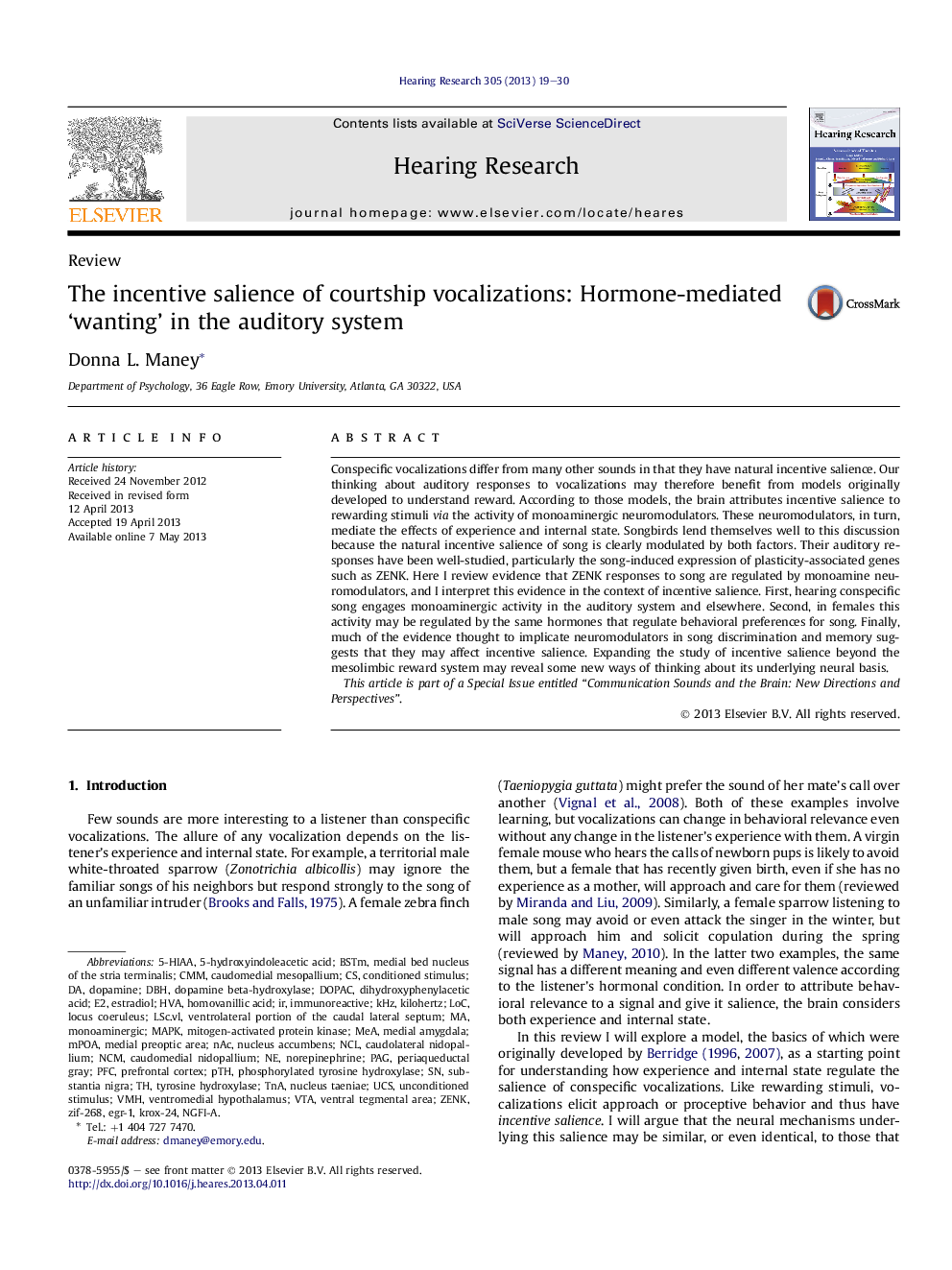| Article ID | Journal | Published Year | Pages | File Type |
|---|---|---|---|---|
| 4355186 | Hearing Research | 2013 | 12 Pages |
•The processing of vocalizations is considered in the context of incentive salience.•The concept of incentive salience extends beyond the mesolimbic reward system.•In songbirds, hearing song engages monoaminergic activity.•This activity is modulated by associative learning and internal state.•Associative learning and internal state can confound study designs.
Conspecific vocalizations differ from many other sounds in that they have natural incentive salience. Our thinking about auditory responses to vocalizations may therefore benefit from models originally developed to understand reward. According to those models, the brain attributes incentive salience to rewarding stimuli via the activity of monoaminergic neuromodulators. These neuromodulators, in turn, mediate the effects of experience and internal state. Songbirds lend themselves well to this discussion because the natural incentive salience of song is clearly modulated by both factors. Their auditory responses have been well-studied, particularly the song-induced expression of plasticity-associated genes such as ZENK. Here I review evidence that ZENK responses to song are regulated by monoamine neuromodulators, and I interpret this evidence in the context of incentive salience. First, hearing conspecific song engages monoaminergic activity in the auditory system and elsewhere. Second, in females this activity may be regulated by the same hormones that regulate behavioral preferences for song. Finally, much of the evidence thought to implicate neuromodulators in song discrimination and memory suggests that they may affect incentive salience. Expanding the study of incentive salience beyond the mesolimbic reward system may reveal some new ways of thinking about its underlying neural basis.This article is part of a Special Issue entitled “Communication Sounds and the Brain: New Directions and Perspectives”.
